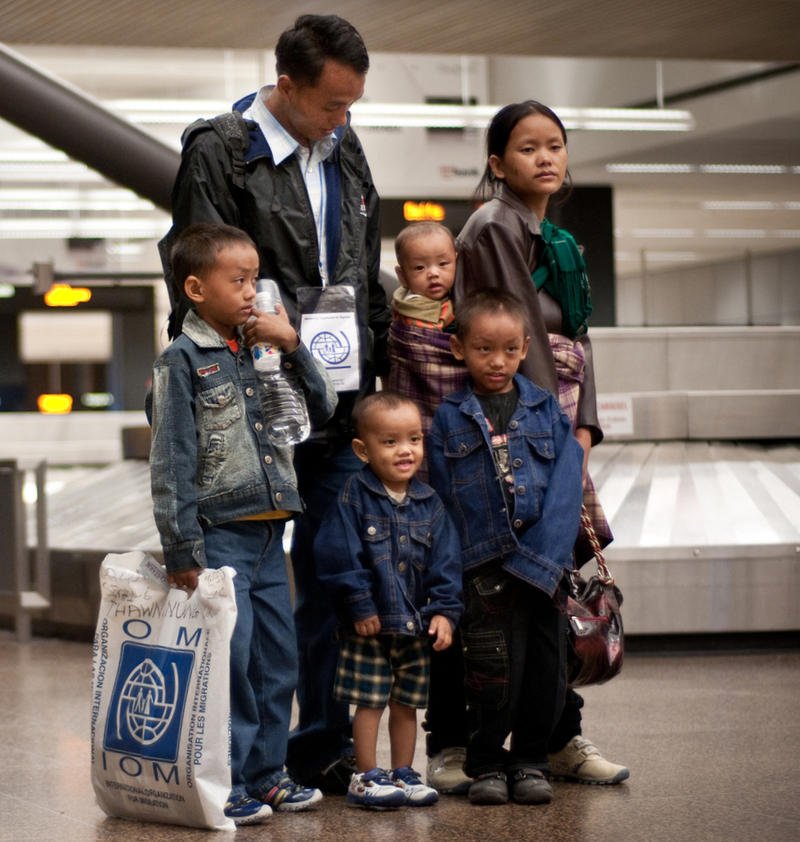More than a week after President Trump turned airports into a battleground by signing an Executive Order aimed to drastically curtailing immigration into the US, the fallout continues. A nationwide temporary restraining order issued by a federal judge in Washington state last week is facing appeal, leaving the borders for all visa holders open for now, but with uncertainty on how long that may be the case. Most of the media attention so far has focused on the plight of impacted permanent residents, also known as green card holders, and nationals of the seven Muslim-majority countries banned in the Executive Order.
But it is the other part of the order that impacts refugees, that may be the most devastating part of the new policy.
By their very nature, refugees are the most vulnerable immigrants in the world. Forced from their homes due to conflict or political oppression, their futures are often at the mercy of government policies abroad. Historically the US has been one of the most generous Western countries in taking in refugees, but Trump’s Executive Order threatens that standing and could have wide ranging impacts around the world.
The Executive Order halts all refugee admissions for 120 days and prohibits the admission of Syrian refugee indefinitely. After Trump signed it on January 27, refugees scheduled to arrive in the US for resettlement were turned away and the processing of refugees still making their way through the US Refugee Admissions Program – generally an 18 to 24 month long process – was stopped. As federal courts around the country started hearing the many lawsuits filed against the Executive Order, some relief for refugees was granted at some airports, such as Boston’s Logan International. But it wasn’t until Judge Robert of the Western District of Washington issued a national restraining order last Friday that refugees got some hope of being able to fulfill the promise of American resettlement.
With the restraining order in effect, immigration controls return to how they were prior to the January 27 Executive Order. For refugees already cleared to resettle in the US, including Syrians, that means they are now welcome to come as previously scheduled.
A State Department official confirmed to UN Dispatch that travel for those refugees is being rescheduled through the International Organization for Migration. Some refugees that were previously denied entry started to arrive on Monday with others scrambling to make travel arrangements. That same official could not confirm whether the processing of refugees, which had previously been halted, had resumed as the main focus is on getting already approved refugees into the country while it is still possible.
That may be a short window. The Justice Department has already appealed Judge Robart’s ruling, and the Ninth Circuit Court of Appeals heard arguments this week on whether to continue the restraining order, or grant a judicial stay which would put the Executive Order back into effect. Yesterday, the Ninth Circuit ruled unanimously to keep the restraining order in effect, but with ongoing appeals and hearings at the trial level to hear the case on its merits, that window could shut again by the end of the month.
Refugee backlash not limited to the US
Legal drama aside, the Executive Order is bound to impact the policies of other countries who are far more vulnerable to irregular migration. This is especially true in Europe. A recent Chatham House poll of ten European countries found that most Europeans surveyed favor a complete ban on further migration from Muslim majority countries. Overall 55 percent of those survey agreed that all migration should be halted while only two countries – the UK and Spain – did not have majorities favoring a ban.
That poll was conducted before January 27 but demonstrates the strong sentiments that many Western countries hold against Muslim immigration. Already more right wing governments have taken a strong stance on refugee migration, such as Hungary which has built multiple border barriers, refused to participate in the EU resettlement scheme and recently announced it will house all refugees and asylum seekers in shipping containers until further notice.
But such drastic measures are not limited to individual governments. At the EU summit in Malta earlier this month, stemming refugees and migrants coming from Libya was the top priority. Despite ample criticism regarding human rights and international law over the EU’s controversial migration deal with Turkey, the political bloc appears determined to reach a similar arrangement with Libya to stop irregular arrivals in Italy regardless of the human cost.
The current global refugee crisis is a crisis, the likes of which the world has not seen since World War II. It will require a global solution and burden sharing by everyone to resolve. President Trump’s Executive Order, like many other anti-refugee policies that have become vogue in Western states, not only betrays the hopes of refugees but ensures that the overall crisis will continue unabated. Although refugees may be the most vulnerable and have the smallest voice in the international migration system, ignoring them will not make them go away.
